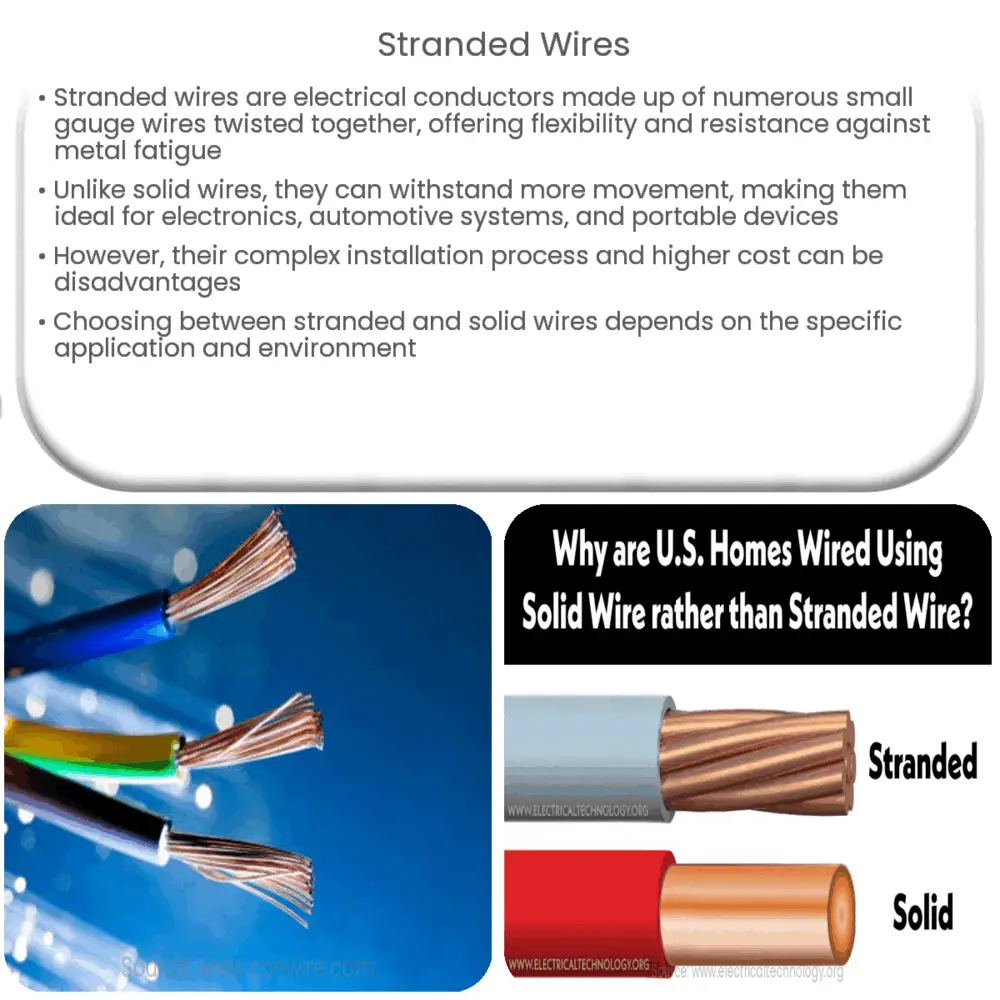Explore the world of stranded wires: their composition, advantages, disadvantages, applications, and considerations for use.

Introduction to Stranded Wires
When it comes to the world of electrical wiring, two major types of wires are often used: solid and stranded. In this article, we’ll focus primarily on the latter, stranded wires.
What Are Stranded Wires?
Stranded wires are electrical conductors that are composed of numerous small gauge wires bundled or twisted together. Unlike solid wires, which consist of a single, thick wire, stranded wires utilize a cluster of smaller wires that enhance their flexibility and endurance against metal fatigue.
The Composition of Stranded Wires
Stranded wires are constructed by combining several thin strands of metal (usually copper, due to its excellent conductivity) into a single wire. Each of these strands can range in size from 30 to 10 AWG (American Wire Gauge), but when twisted together, they form a larger wire that could range anywhere from 8 to 0000 (4/0) AWG. This versatile range allows for stranded wires to be used in a variety of electrical applications.
Advantages of Stranded Wires
- Flexibility: Stranded wires are more flexible than solid wires, making them better suited for applications where the wire needs to be moved or bent regularly, such as in electronic devices, automotive applications, and portable appliances.
- Resistance to Breakage: The bundled construction of stranded wires means they are less likely to break under stress compared to solid wires. The multiple strands distribute the pressure, reducing the risk of metal fatigue and wire failure.
- Greater Surface Area: In certain applications, stranded wires can carry more current than a solid wire of the same size. This is due to the increased surface area of the strands.
Disadvantages of Stranded Wires
- Complexity in Installation: Stranded wires can be slightly more difficult to install compared to solid wires, particularly when connecting to terminals. Their stranded nature makes them susceptible to fraying if not properly handled.
- Cost: Due to their more complex manufacturing process, stranded wires tend to be more expensive than solid wires.
Common Applications of Stranded Wires
Given their flexibility and durability, stranded wires are widely used in numerous applications. Here are a few examples:
- Electronics: Many electronic devices and appliances use stranded wires due to their ability to withstand movement and vibration better than solid wires.
- Automotive: The automotive industry extensively uses stranded wires for vehicles’ internal wiring systems, considering the constant vibration and motion they endure.
- Portable Devices: Any device that is regularly moved, such as headphones or mobile chargers, often uses stranded wire for its flexibility and resistance to metal fatigue.
Considerations When Choosing Stranded Wires
Before choosing a stranded wire for a particular application, it’s crucial to consider factors such as the type of environment the wire will be used in, the amount of current it needs to carry, and how much movement or bending the wire will endure. For applications with significant vibration or movement, stranded wires are often the better choice. However, in static environments, a solid wire might be more suitable.
Conclusion
Stranded wires play an integral role in our everyday lives, from the functioning of our electronic devices to the operations of our automobiles. Their flexibility, resistance to breakage, and potentially greater current-carrying capacity make them an excellent choice for numerous applications. However, they do come with their own set of challenges, such as a more complex installation process and higher cost. Therefore, it’s essential to carefully consider the specific requirements of any application before deciding on the most suitable type of wire.
By understanding the characteristics, advantages, and disadvantages of stranded wires, individuals and businesses can make more informed decisions about their use and ensure they are choosing the most suitable wiring for their needs. With the right choice, stranded wires can provide reliable and effective solutions to a range of electrical challenges.

